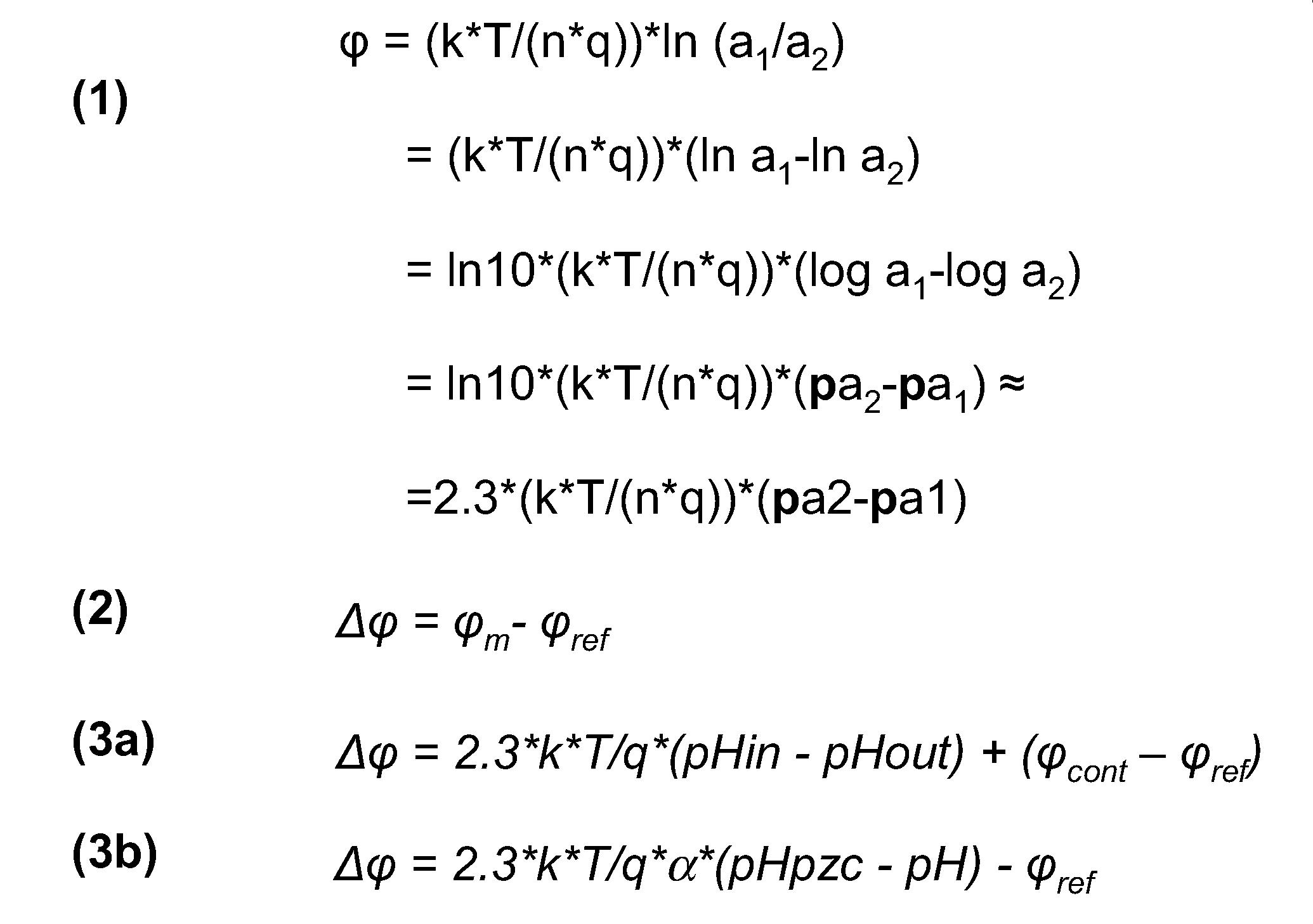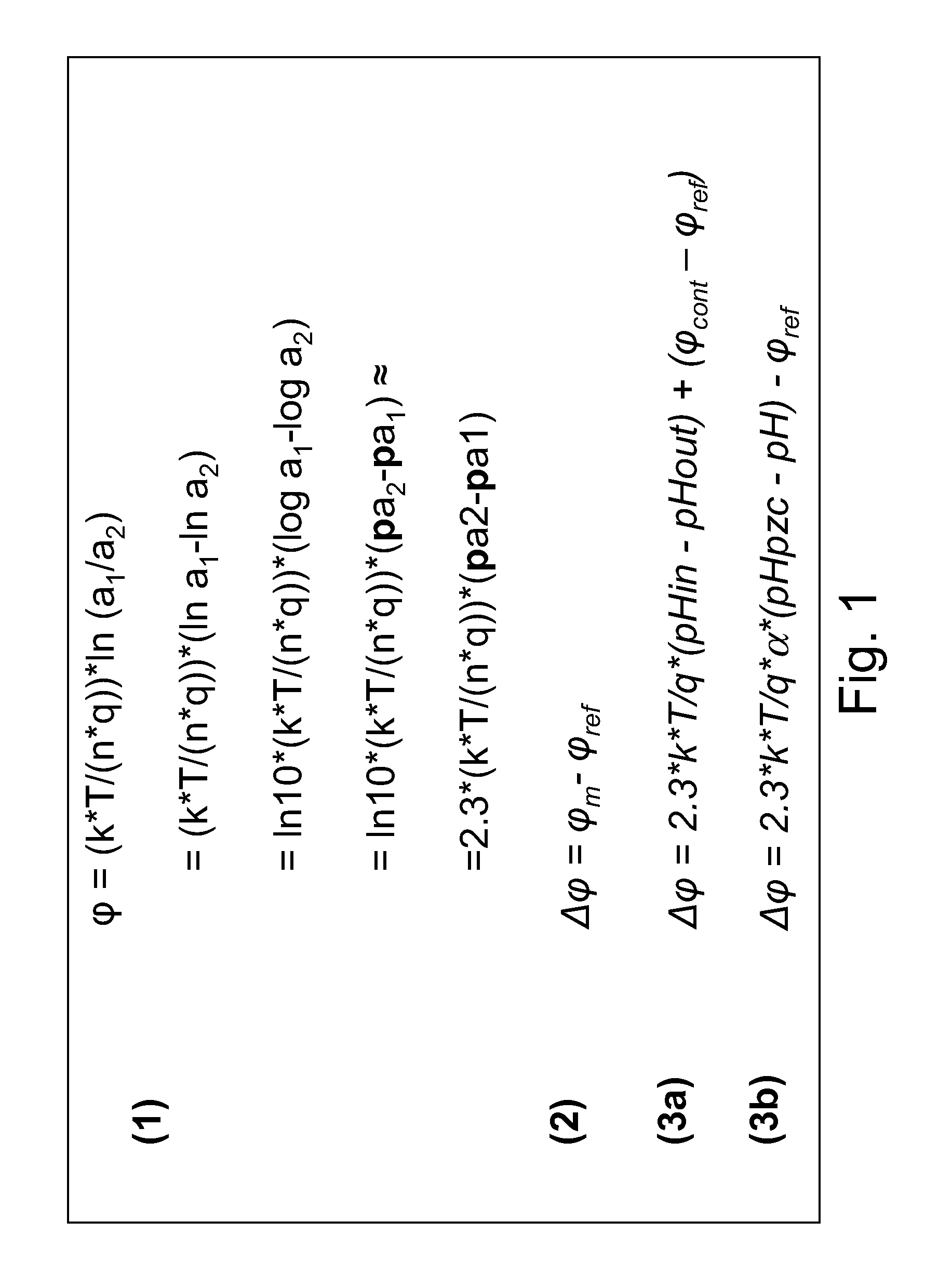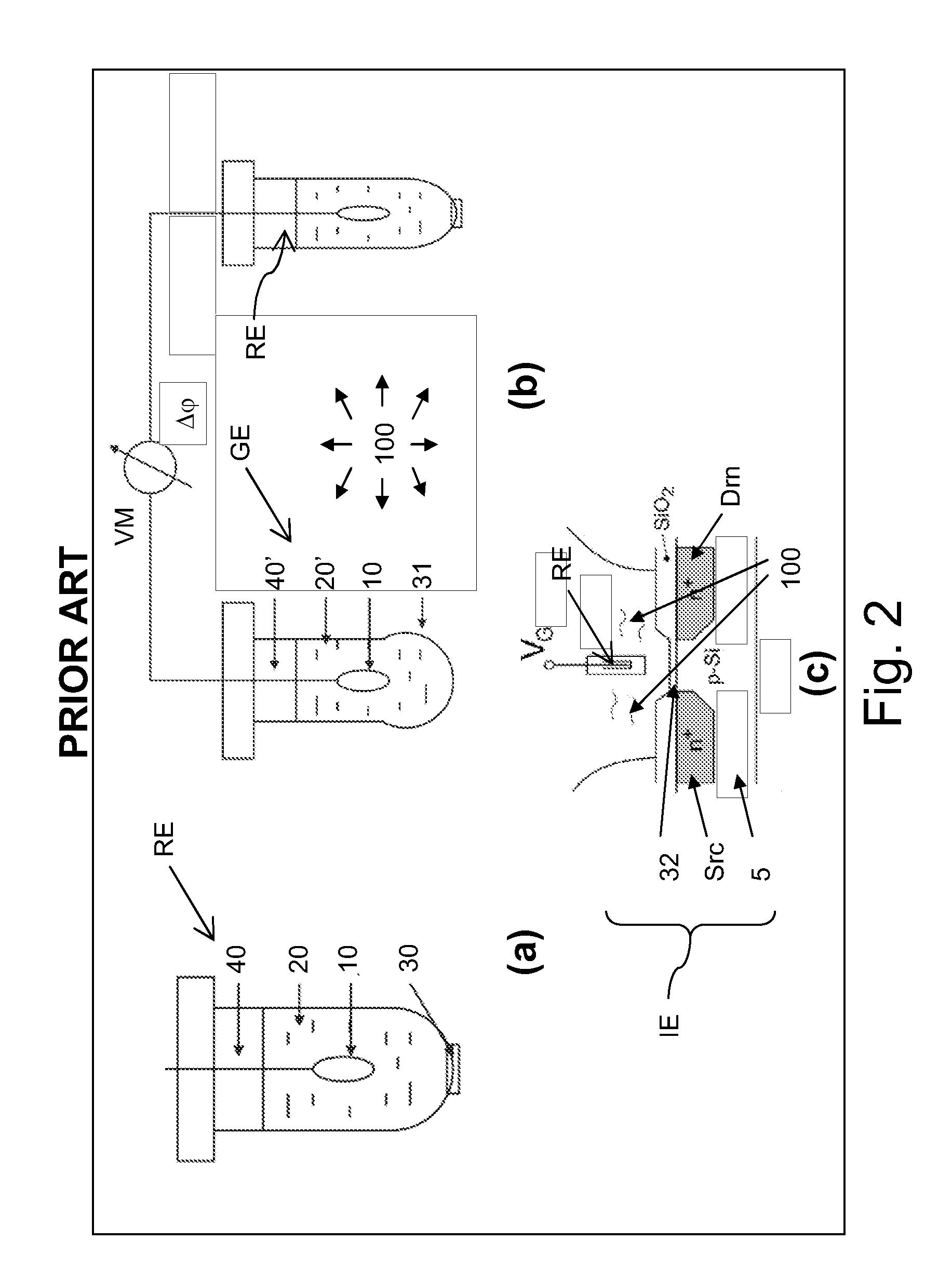Electrochemical potentiometric sensing without reference electrode
- Summary
- Abstract
- Description
- Claims
- Application Information
AI Technical Summary
Benefits of technology
Problems solved by technology
Method used
Image
Examples
Embodiment Construction
[0074]The invention provides a new method for determining a charged particle, i.e. ions and charged biomolecules, concentration in a liquid analyte. In an embodiment the method concerns determination of a hydrogen ion concentration and thereby the pH-value. It is based on surface-potential measurements at different temperature differences of two electrode analyte interfaces. The electrochemical sensor comprises a first electrode (with a first ion-sensitive sensor dielectric) and a second electrode (with a second ion-sensitive dielectric). The first electrode may be part of an ISFET, an EGFET, or an EIS capacitor. The second electrode may comprise the same layers and materials as the first electrode, which is one of the key advantages over the known electrochemical sensors. The charged particle concentration is calculated from the surface-potential versus temperature curve which is obtained by determining the potential difference between the first electrode and the second electrode a...
PUM
 Login to View More
Login to View More Abstract
Description
Claims
Application Information
 Login to View More
Login to View More - Generate Ideas
- Intellectual Property
- Life Sciences
- Materials
- Tech Scout
- Unparalleled Data Quality
- Higher Quality Content
- 60% Fewer Hallucinations
Browse by: Latest US Patents, China's latest patents, Technical Efficacy Thesaurus, Application Domain, Technology Topic, Popular Technical Reports.
© 2025 PatSnap. All rights reserved.Legal|Privacy policy|Modern Slavery Act Transparency Statement|Sitemap|About US| Contact US: help@patsnap.com



